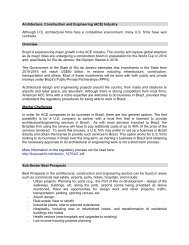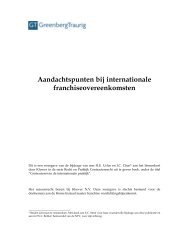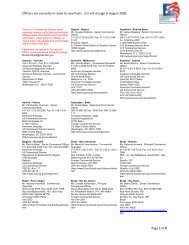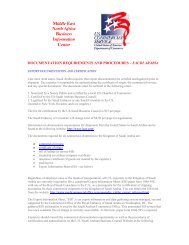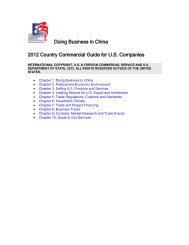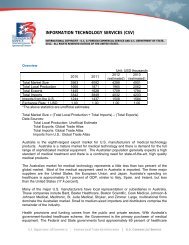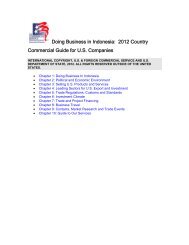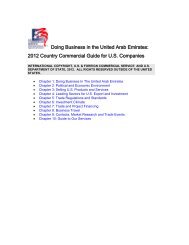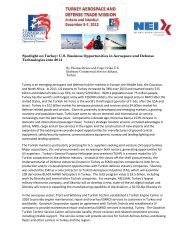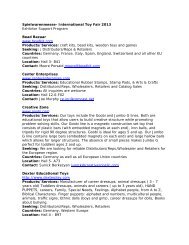“Motorcycles: European Market Briefs 2013-2014”. - Export.gov
“Motorcycles: European Market Briefs 2013-2014”. - Export.gov
“Motorcycles: European Market Briefs 2013-2014”. - Export.gov
Create successful ePaper yourself
Turn your PDF publications into a flip-book with our unique Google optimized e-Paper software.
35 U.S. Commercial Service Resource Guide for the <strong>European</strong> Motorcycle Industry<br />
HUNGARY<br />
Capital: Budapest<br />
Population: 9.9<br />
million<br />
GDP: $210 billion<br />
Currency: Hungarian<br />
Forint (HUF)<br />
Language: Hungarian<br />
Contact:<br />
U.S Commercial Service Budapest<br />
Ms. Csilla Virágos<br />
Commercial Specialist<br />
Tel. +36-1-475-4250<br />
Fax: +36-1-475-4676<br />
Csilla.Viragos@trade.<strong>gov</strong><br />
export.<strong>gov</strong>/hungary<br />
SUMMARY<br />
In 2012, close to 145,000 motorcycles were registered in Hungary. The majority of<br />
registered motorbikes and scooters are in the category below 50 cm3. The average age of<br />
the motorbikes is 18-25 years. Motorbike sales in Hungary have still been on decline since<br />
2008. In 2012 only 2,519 new motorbikes were sold, the Hungarian Vehicle Importers<br />
Association (AHAI) forecast total sales of 2,630 new motorcycles for <strong>2013</strong>. Scooters or<br />
mopeds (50 cm³ or below) without license plates have been more popular recently, as they<br />
are not subject to local vehicle taxes such as weight tax or registration tax. There are still a<br />
lot of former Central-Easter <strong>European</strong> brands in use such as JAWA, Simson and Pannonia<br />
and they still represent favorite brands in less urban areas in Hungary.<br />
In March 2012, only 250 new motorcycles were sold compared to 315 sold in April 2011. In<br />
2012 a total of 9,754 new and used motorbikes were registered. The peak years for<br />
motorcycles sales were 2004 through 2006 when more than 18,000 motorcycles and<br />
scooters were sold annually. Motorcycle sales show somehow similar trends as passenger<br />
car sales: the vast majority of new motorcycle registrations take place in the first half of the<br />
year due to the seasonal nature of consumer demand in this sector.<br />
According to the Association of Hungarian Automotive Industry (AHAI), the registration tax<br />
levied on automobiles and motorbikes introduced in January 2007 had a significant<br />
negative impact on motorcycle sales figures. Until the introduction of this tax, motorbikes<br />
over 250 cm³ were popular, but since the introduction of the tax, demand for 50 to 125 cm³<br />
vehicles increased. For large engine motorbikes, the registration tax can be around 25-30<br />
percent of the retail price of the vehicle.<br />
Presently, there is no domestic production of motorbikes in Hungary. EU motorcycle safety<br />
and emission standards have been introduced in Hungary, including mandatory advanced<br />
braking systems on new motorcycles and automatic headlamp-on switching for all “Lcategory”<br />
vehicles. This category covers a wide range of vehicles such as two- or threewheel<br />
powered cycles, mopeds, motorcycles with and without a side-car, tricycles, on-road<br />
quads and mini-cars. The proposal sets ambitious emission requirements for these<br />
vehicles.




